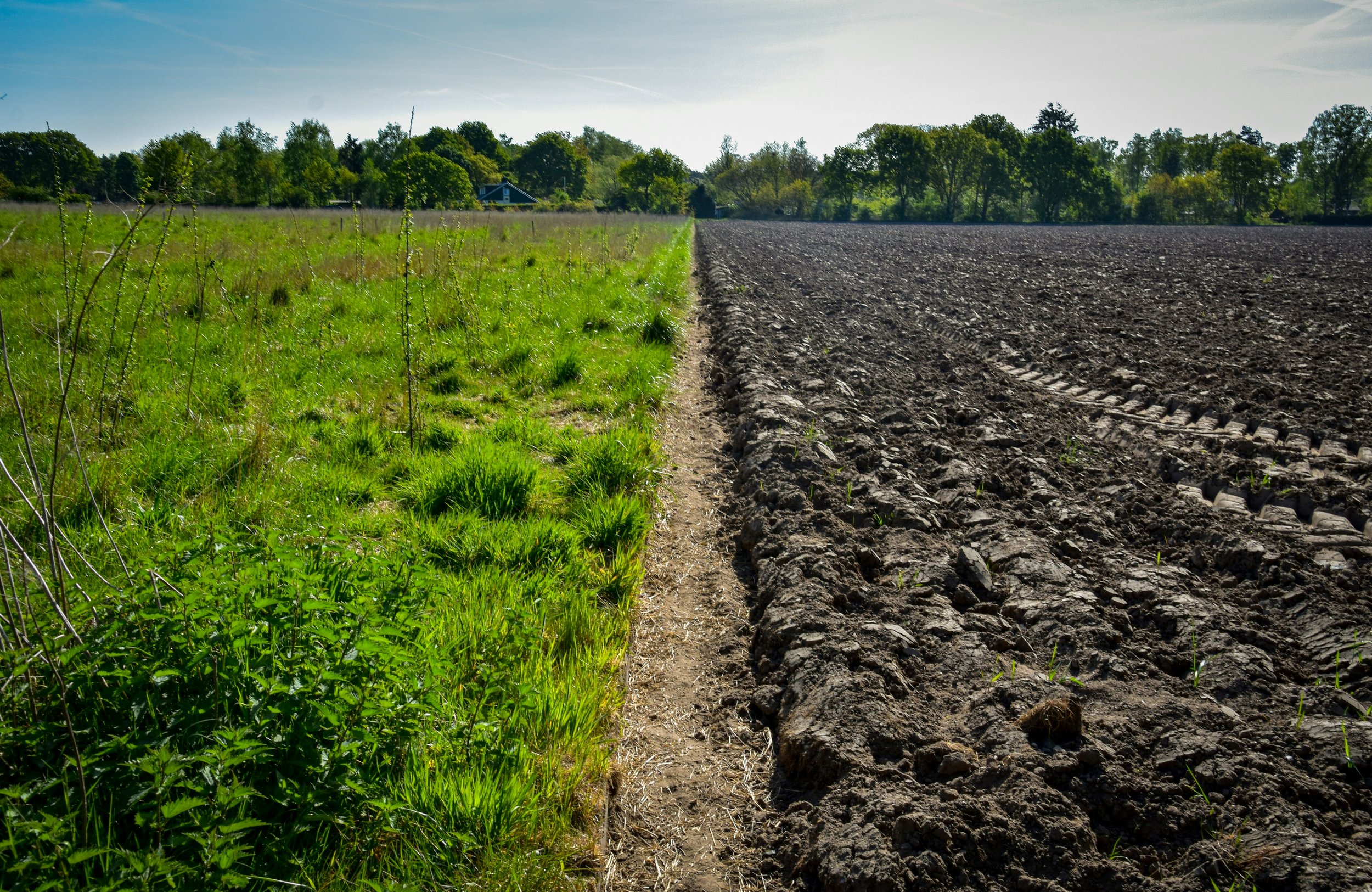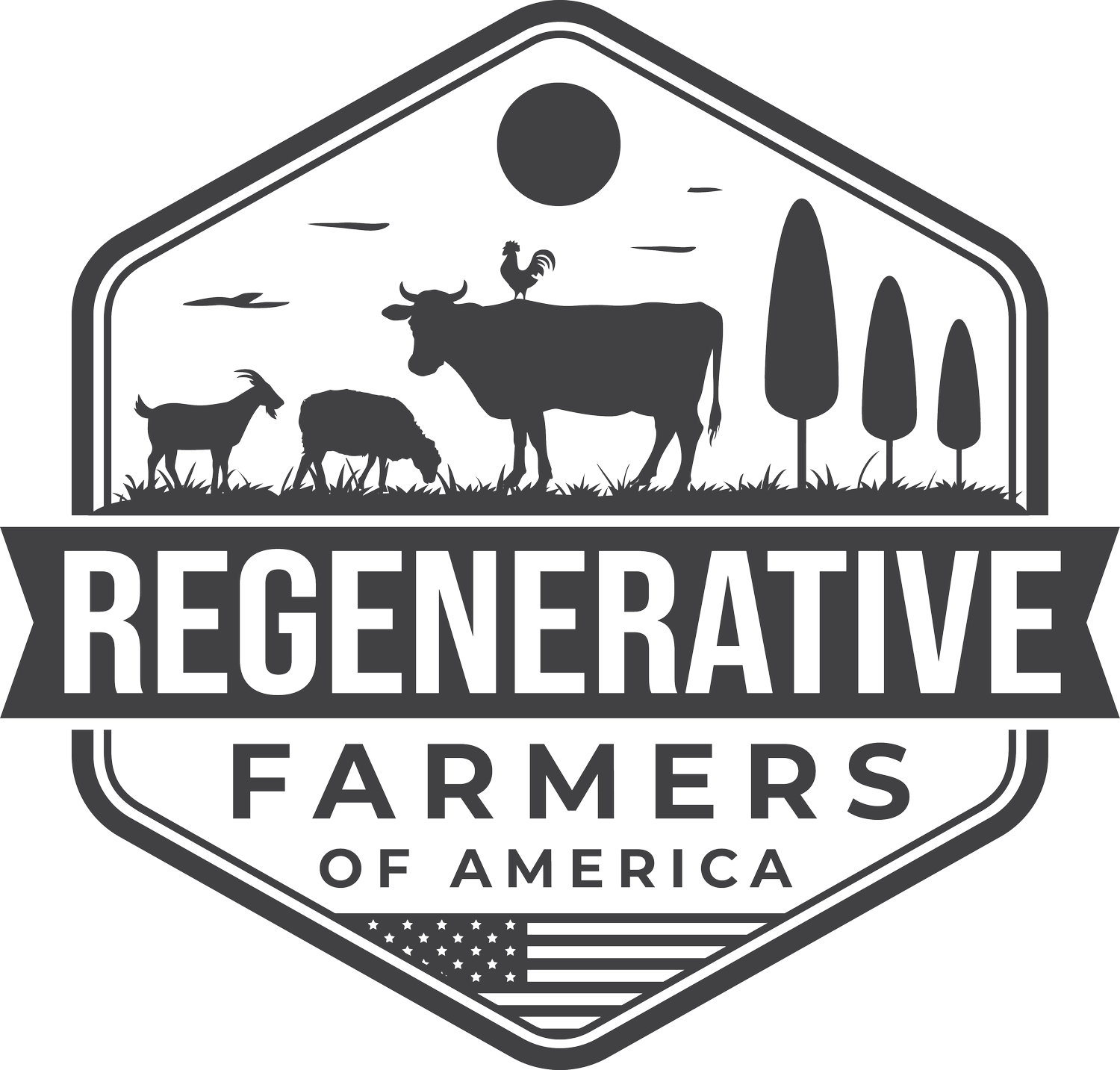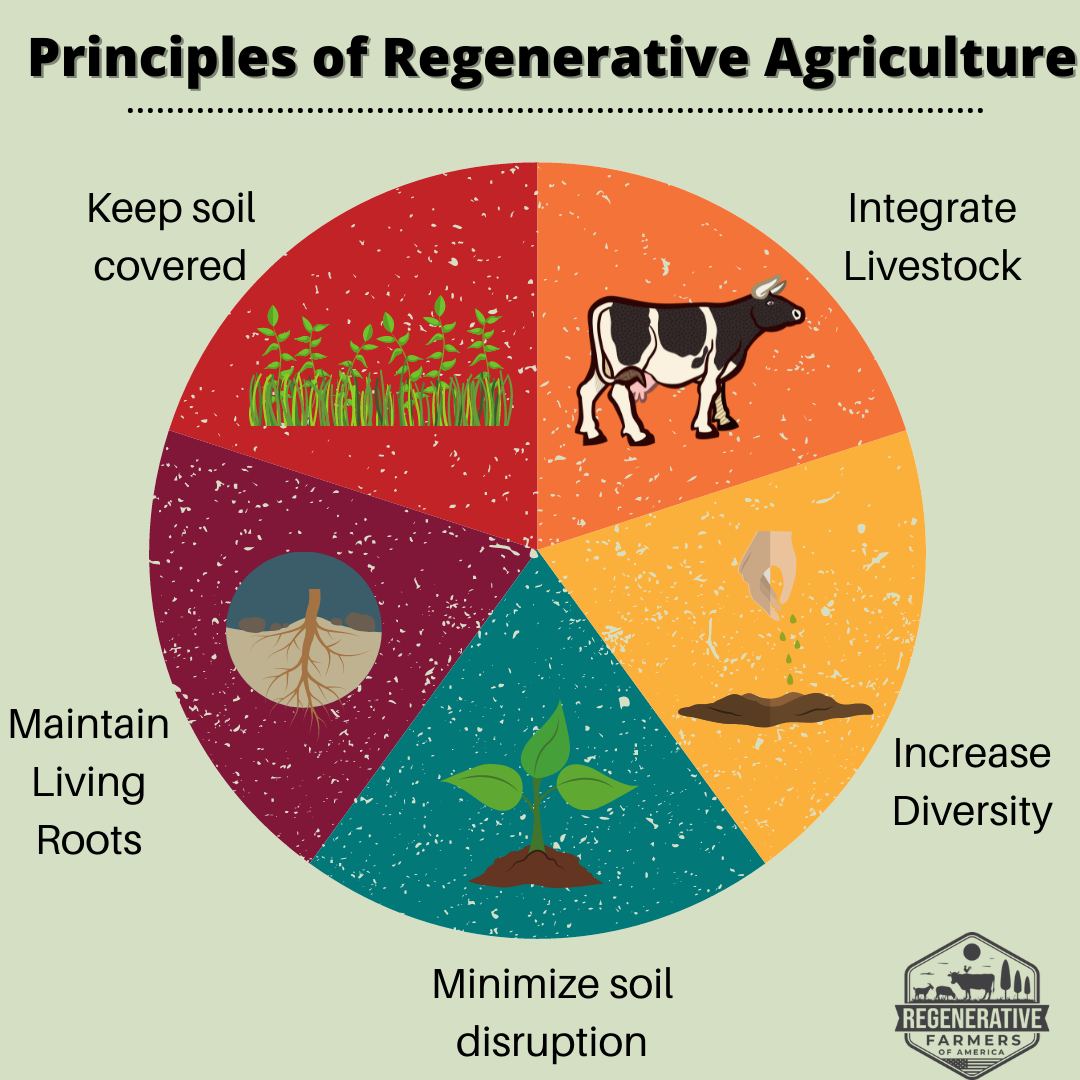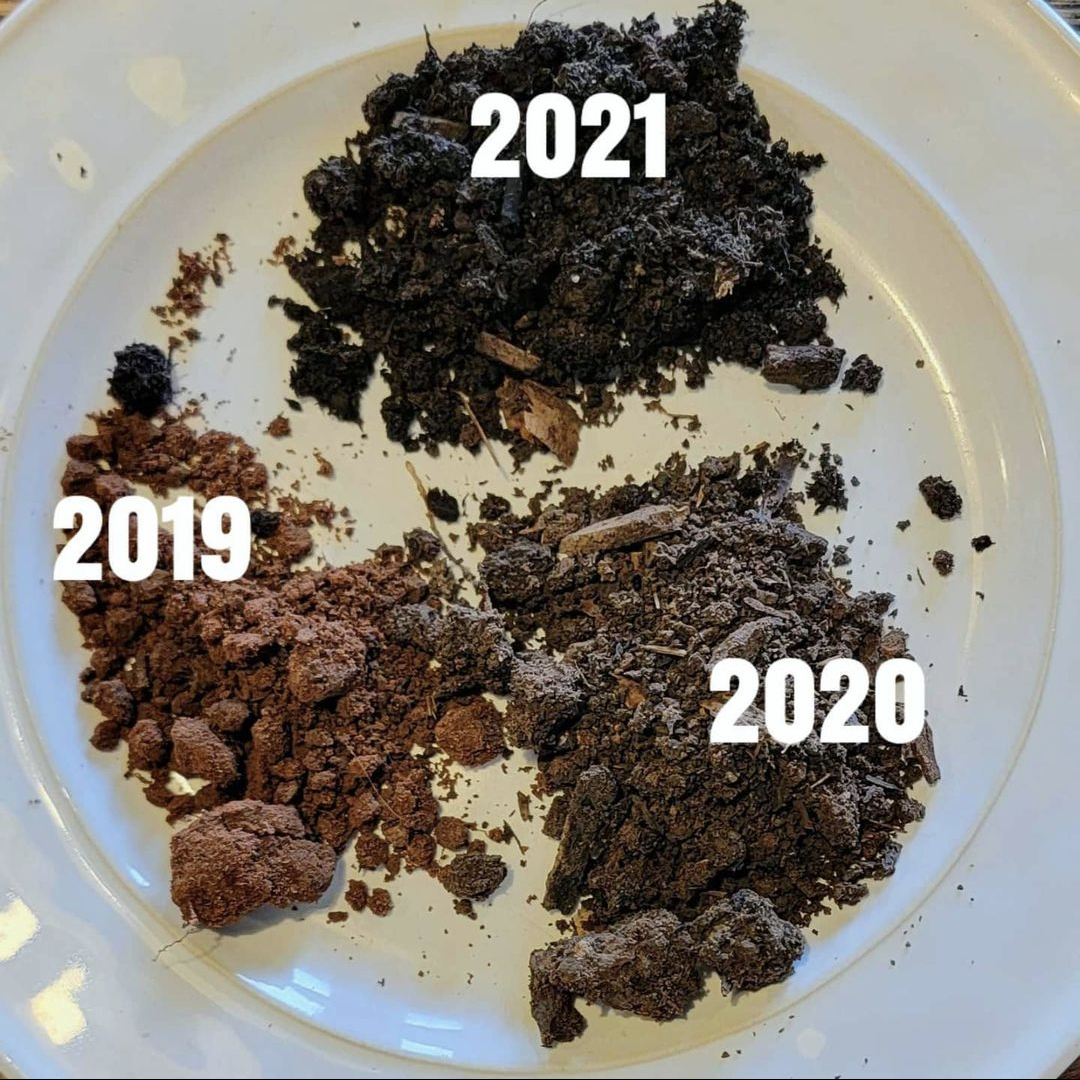
Regenerative Agriculture
We can save the world by how we eat.
What is Regenerative Agriculture?
Regenerative agriculture is an approach to farming that prioritizes soil health, biodiversity, and natural processes. It is a holistic, systems-based approach that seeks to create resilient and regenerative agricultural systems that restore and replenish natural resources. Regenerative farmers use a variety of practices such as crop rotation, cover cropping, reduced tillage, and the integration of livestock to improve soil health, conserve water, and promote biodiversity.
Discover the power of Regenerative Agriculture, where farmers and consumers work together to heal the land and create thriving ecosystems.
Together, we are creating a more just, resilient, and regenerative world, one farm at a time. Are you ready to join us?
Benefits of Regenerative Agriculture:
Reverse climate change: Regenerating our farmland can sequester more carbon than we produce. > See this study from White Oak Pastures proving they sequestered more carbon than their whole farm operation produced including their USDA processing facility!
Improve nutrition: Healthy soils produce more nutrient-dense foods which are better for us and for so many other reasons. Many current health issues are rooted in nutrient deficiencies. > Read the Study comparing conventional to regenerative nutrient densities.
Improve yields: Regenerative, diverse, and healthy farms and ranches produce higher yields than industrial monoculture. > Read the Report by the UN Special Rapporteur on the Right to Food
Create drought-resistant soil: The addition of organic matter to the soil increases the water-holding capacity of soil. This helps fight droughts which are becoming more prevalent every year. > Learn More
Revitalize local economies: Family farming represents an opportunity to boost local economies. > Read the FAO Report
Principles of Regenerative Agriculture:
Cover the ground (cover crop, mulch, etc.)
Limit the disruption of the soil (No till/ no dig)
Increase biodiversity
Keep the roots underground (perennial system)
Incorporate animals into the rotation (rotational grazing)
How Regenerative Agriculture Differs from Conventional Agriculture
Regenerative agriculture differs from conventional agriculture in several key ways. While conventional agriculture often relies on chemical fertilizers, pesticides, and monoculture farming, regenerative agriculture prioritizes soil health, biodiversity, and natural processes. Regenerative farmers use practices such as crop rotation, cover cropping, and reduced tillage to improve soil health, conserve water, and promote biodiversity. They also integrate livestock into their systems to mimic natural grazing patterns and improve soil fertility. Additionally, regenerative farmers prioritize carbon sequestration and reducing greenhouse gas emissions, recognizing the role of agriculture in mitigating climate change. By adopting regenerative agriculture practices, farmers can produce healthier, more resilient crops while also restoring ecosystem health and promoting a more sustainable food system.
How Regenerative Agriculture Differs from Conventional Agriculture
Regenerative agriculture differs from conventional agriculture in several key ways. While conventional agriculture often relies on chemical fertilizers, pesticides, and monoculture farming, regenerative agriculture prioritizes soil health, biodiversity, and natural processes. Regenerative farmers use practices such as crop rotation, cover cropping, and reduced tillage to improve soil health, conserve water, and promote biodiversity. They also integrate livestock into their systems to mimic natural grazing patterns and improve soil fertility. Additionally, regenerative farmers prioritize carbon sequestration and reducing greenhouse gas emissions, recognizing the role of agriculture in mitigating climate change. By adopting regenerative agriculture practices, farmers can produce healthier, more resilient crops while also restoring ecosystem health and promoting a more sustainable food system.
We love this example of soil improvement holding more and more carbon and nutrients from Tanglefoot Farm.
Learn how Regenerative Agriculture is the solution!
How can you support the Regenerative Agriculture movement?
Buy regenerative.
Visit our map to find a farmer near you or check out the list of Regenerative companies that ship right to your door.
Supporting is that easy!
Learn more about Regenerative Agriculture and getting started on our blog!
FAQs about Regenerative Agriculture
What is regenerative agriculture?
Regenerative agriculture is an approach to farming that focuses on rebuilding soil health, promoting biodiversity, and improving ecosystem services. This involves implementing a range of practices, such as crop rotation, cover cropping, reduced tillage, and the use of natural fertilizers and pest management techniques. Learn more about regenerative agriculture practices above.
What are the benefits of regenerative agriculture?
Regenerative agriculture offers a range of benefits, including improved soil health, increased biodiversity, and enhanced ecosystem services. It can also help to reduce greenhouse gas emissions and mitigate or possibly reverse the impacts of climate change. Additionally, regenerative agriculture can lead to improved yields, increased resilience, and improved profitability for farmers. This growing trend offers huge opportunities for consumers, farmers, and the planet.
How does regenerative agriculture differ from conventional agriculture?
Conventional agriculture typically relies on synthetic fertilizers and pesticides, monoculture cropping systems, and intensive tillage. In contrast, regenerative agriculture emphasizes soil health, biodiversity, and natural nutrient cycling. Regenerative farmers often use crop rotation, cover cropping, and reduced tillage to improve soil health and promote ecological diversity.
Can regenerative agriculture feed the world's growing population?
Many experts believe that regenerative agriculture can help to feed the world's growing population. By improving soil health and enhancing ecosystem services, regenerative practices can lead to increased yields, improved food quality, and increased resilience to climate change. Additionally, regenerative agriculture can promote local food systems and reduce reliance on global supply chains.
How can consumers support regenerative agriculture?
Consumers can support regenerative agriculture by choosing to buy products from regenerative farmers and companies. . You can also support local farmers' markets and community-supported agriculture (CSA) programs, which often promote regenerative practices. Find farmers practicing regenerative agriculture here or go to our regenerative companies page to have regenerative products shipped to your door, its that easy to support regenerative farming!









